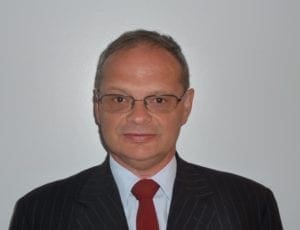
By Georges Simard, IEEE PES Grid Vision 2050 editor-in-chief
I’m pleased to announce to my colleagues that the Grid Vision 2050 project is nearing completion and the resulting reports are now being published.
These publications are the culmination of a two-year effort to identify today’s existing and emerging technologies and chart their progress and likely synergies across the decades between now and the year 2050. These documents are likely to influence standards development going forward as the Grid Vision 2050 efforts included identifying gaps in our current standards efforts.
I had the opportunity to serve as editor-in-chief of the Power and Energy Society (PES) project, one of five IEEE technical societies to be involved in the Grid Vision 2050 project. The other societies included the Computer Society, Communications Society, Control Systems Society and Intelligent Transportation Society.
The overall effort to responsibly take stock of the future and its demands on innovation goes to the heart of the IEEE’s mission “to foster technological innovation … for the benefit of humanity.”
I’d like to draw back the curtain on the outcomes from the PES portion of the overall Grid Vision 2050 project to give everyone a sense of the possibilities created by this project.
The PES vision team found it highly likely that the centralized grid of today will evolve into a more decentralized network in the future. Already central power stations are being augmented by distributed generation. Power has begun to flow two ways. With intelligence extending into the distribution network, the lines between transmission and distribution are blurring. And end-users can also be generators. Thus, the Power Grid Vision Team adopted the more flexible terms “make,” “move” and “use” to replace “generation,” “transmission & distribution” and “end” user.
The notion of flexibility emerged as an important tool for adaptability. Flexible thinking, of course, in light of the many existing and future variables, is a must. At the device and software level, flexibility means interoperability based on standards. Operational flexibility will be important for orchestrating myriad technologies on the future, networked grid. A diverse toolkit should provide flexibility in approaching regional differences in legacy systems and resources.
The Power Grid Vision document is accompanied by a roadmap and a reference model. The roadmap forecasts when emerging technologies are likely to reach the market and – this is critical – it defines research and standards development needs that can enable innovation. The reference model articulates the fundamental technical concepts defined in the vision.
This work clearly identifies gaps in technology, which should provide direction to academics, researchers and investors on where to place their efforts.
By identifying future challenges we’ve provided a basis for technology innovation and investment that should produce a robust global market, one that brings an expanded tool kit to bear on myriad challenges.
I’d like to ask each and every one of you to get the word out on this tremendous effort, which represents perhaps the most comprehensive look at power grid and related technologies and to chart their course across decades to 2050. I’m sure you’ll be hearing from my counterparts on the other technical teams as their reports reach publication as well.









